- Home
- Graham Hancock
Fingerprints of the Gods Page 6
Fingerprints of the Gods Read online
Page 6
general category of documents that contain the advanced geographical
knowledge I have outlined.
The Piri Reis Map of 1513, for example, places South America and
Africa in the correct relative longitudes,11 theoretically an impossible feat
for the science of the time. But Piri Reis was candid in admitting that his
map was based on far earlier sources. Could it have been from one of
these sources that he derived his accurate longitudes?
Also of great interest is the so-called ‘Dulcert Portulano’ of AD 1339
which focuses on Europe and North Africa. Here latitude is perfect across
huge distances and the total longitude of the Mediterranean and Black
Seas is correct to within half a degree.12
Professor Hapgood comments that the maker of the original source
from which the Dulcert Portulano was copied had ‘achieved highly
scientific accuracy in finding the ratio of latitude to longitude. He could
only have done this if he had precise information on the relative
longitudes of a great many places scattered all the way from Galway in
Ireland to the eastern bend of the Don in Russia.’13
The Zeno Map14 of AD 1380 is another enigma. Covering a vast area of
the north as far as Greenland, it locates a great many widely scattered
places at latitudes and longitudes which are ‘amazingly correct’.15 It is
10 Ibid.
11 Maps, pp. 1, 41.
12 Ibid., p. 116.
13 Ibid.
14 Ibid., pp. 149-58.
15 Ibid, p. 152.
38
Graham Hancock – FINGERPRINTS OF THE GODS
‘unbelievable’, asserts Hapgood, ‘that anyone in the fourteenth century
could have found accurate latitudes for these places, to say nothing of
accurate longitudes’.16
The Oronteus Finaeus World Map also commands attention: it
successfully places the coasts of Antarctica in correct latitudes and
relative longitudes and finds a remarkably accurate area for the continent
as a whole. This reflects a level of geographical knowledge not available
until the twentieth century.17
The Portolano of lehudi Ibn Ben Zara is another map notable for its
accuracy where relative latitudes and longitudes are concerned.18 Total
longitude between Gibraltar and the Sea of Azov is accurate to half a
degree, while across the map as a whole average errors of longitude are
less than a degree.19
These examples represent only a small fraction of the large and
challenging dossier of evidence presented by Hapgood. Layer upon layer,
the cumulative effect of his painstaking and detailed analysis is to
suggest that we are deluding ourselves when we suppose that accurate
instruments for measuring longitude were not invented until the
eighteenth century. On the contrary, the Piri Reis and other maps appear
to indicate very strongly that such instruments were re-discovered then,
that they had existed long ages before and had been used by a civilized
people, now lost to history, who had explored and charted the entire
earth. Furthermore, it seems that these people were capable not only of
designing and manufacturing precise and technically advanced
mechanical instruments but were masters of a precocious mathematical
science.
The lost mathematicians
To understand why, we should first remind ourselves of the obvious: the
earth is a sphere. When it comes to mapping it, therefore, only a globe
can represent it in correct proportion. Transferring cartographic data
from a globe to flat sheets of paper inevitably involves distortions and
can be accomplished only by means of an artificial and complex
mechanical and mathematical device known as map projection.
There are many different kinds of projection. Mercator’s, still used in
atlases today, is perhaps the most familiar. Others are dauntingly
referred to as Azimuthal, Stereographic, Gnomonic, Azimuthal
Equidistant, Cordiform, and so on, but it is unnecessary to go into this
any further here. We need only note that all successful projections require
16 Ibid.
17 Ibid., p. 98.
18 Ibid., p. 170.
19 Ibid., p. 173.
39
Graham Hancock – FINGERPRINTS OF THE GODS
the use of sophisticated mathematical techniques of a kind supposedly
unknown in the ancient world 20 (particularly in the deepest antiquity
before 4000 BC when there was allegedly no human civilization at all, let
alone one capable of developing and using advanced mathematics and
geometry).
Charles Hapgood submitted his collection of ancient maps to the
Massachusetts Institute of Technology for evaluation by Professor Richard
Strachan. The general conclusion was obvious, but he wanted to know
precisely what level of mathematics would have been required to draw up
the original source documents. On 18 April 1965 Strachan replied that a
very high level of mathematics indeed would have been necessary. Some
of the maps, for example, seemed to express ‘a Mercator type projection’
long before the time of Mercator himself. The relative complexity of this
projection (involving latitude expansion) meant that a trigonometric
coordinate transformation method must have been used.
Other reasons for deducing that the ancient map-makers must have
been skilled mathematicians were as follows:
1 The determination of place locations on a continent requires at least geometric
triangulation methods. Over large distances (of the order of 1000 miles) corrections
must be made for the curvature of the earth, which requires some understanding of
spherical trigonometry.
2 The location of continents with respect to one another requires an understanding of
the earth’s sphericity, and the use of spherical trigonometry.
3 Cultures with this knowledge, plus the precision instruments to make the required
measurements to determine location, would most certainly use their mathematical
technology in creating maps and charts.’21
Strachan’s impression that the maps, through generations of copyists,
revealed the handiwork of an ancient, mysterious and technologically
advanced civilization, was shared by reconnaissance experts from the US
Airforce to whom Hapgood submitted the evidence. Lorenzo Burroughs,
chief of the 8th Reconnaissance Technical Squadron’s Cartographic
Section at Westover Air Base, made a particularly close study of the
Oronteus Finaeus Map. He concluded that some of the sources upon
which it was based must have been drawn up by means of a projection
similar to the modern Cordiform Projection. This, said Burroughs:
suggests the use of advanced mathematics. Further, the shape given to the
Antarctic Continent suggests the possibility, if not the probability, that the original
source maps were compiled on a stereographic or gnomonic type of projection
involving the use of spherical trigonometry.
We are convinced that the findings made by you and your associates are valid, and
that they raise extremely important questions affecting geology and ancient
20 Ibid., p. 225ff.
21 Ibid., p. 228.
<
br /> 40
Graham Hancock – FINGERPRINTS OF THE GODS
history ...’22
Hapgood was to make one more important discovery: a Chinese map
copied from an earlier original on to a stone pillar in AD 1137.23 This map
incorporates precisely the same kind of high quality information about
longitudes as the others. It has a similar grid and was drawn up with the
benefit of spherical trigonometry. Indeed, on close examination, it shares
so many features with the European and Middle Eastern maps that only
one explanation seems adequate: it and they must have stemmed from a
common source.24
We seem to be confronted once again by a surviving fragment of the
scientific knowledge of a lost civilization. More than that, it appears that
this civilization must have been at least in some respects as advanced as
our own and that its cartographers had ‘mapped virtually the entire globe
with a uniform general level of technology, with similar methods, equal
knowledge of mathematics, and probably the same sorts of
instruments’.25
The Chinese map also indicates something else: a global legacy must
have been handed down—a legacy of inestimable value, in all probability
incorporating much more than sophisticated geographical knowledge.
Could it have been some portion of this legacy that was distributed in
prehistoric Peru by the so-called ‘Viracochas’, mysterious bearded
strangers said to have come from across the seas, in a ‘time of darkness’,
to restore civilization after a great upheaval of the earth?
I decided to go to Peru to see what I could find.
22 Ibid., pp. 244-5.
23 Ibid., p. 135.
24 Ibid., p. 139.
25 Ibid., pp. 139, 145.
41
Graham Hancock – FINGERPRINTS OF THE GODS
Part II
Foam of the Sea
Peru and Bolivia
42
Graham Hancock – FINGERPRINTS OF THE GODS
Chapter 4
Flight of the Condor
I’m in southern Peru, flying over the Nazca lines.
Below me, after the whale and the monkey, the hummingbird comes
into view, flutters and unfolds her wings, stretches forward her delicate
beak towards some imaginary flower. Then we turn hard right, pursued
by our own tiny shadow as we cross the bleak scar of the Pan-American
highway, and follow a trajectory that brings us over the fabulous snakenecked ‘Alcatraz’: a heron 900 feet long conceived in the mind of a
master geometer. We circle around, cross the highway for a second time,
pass an astonishing arrangement of fish and triangles laid out beside a
pelican, turn left and find ourselves floating over the sublime image of a
giant condor with feathers extended in stylized flight.
Just as I try to catch my breath, another condor almost close enough to
touch materializes out of nowhere, a real condor this time, haughty as a
fallen angel riding a thermal back to heaven. My pilot gasps and tries to
follow him. For a moment I catch a glimpse of a bright, dispassionate eye
that seems to weigh us up and find us wanting. Then, like a vision from
some ancient myth, the creature banks and glides contemptuously
backwards into the sun leaving our single-engined Cessna floundering in
the lower air.
Below us now there’s a pair of parallel lines almost two miles long,
arrow straight all the way to vanishing point. And there, off to the right, a
series of abstract shapes on a scale so vast—and yet so precisely
executed—that it seems inconceivable they could have been the work of
men.
The people around here say that they were not the work of men, but of
demigods, the Viracochas,1 who also left their fingerprints elsewhere in
the Andean region many thousands of years ago.
The riddle of the lines
The Nazca plateau in southern Peru is a desolate place, sere and
unwelcoming, barren and profitless. Human populations have never
concentrated here, nor will they do so in the future: the surface of the
moon seems hardly less hospitable.
If you happen to be an artist with grand designs, however, these high
1 Tony Morrison with Professor Gerald S. Hawkins, Pathways to the Gods, Book Club
Associates, London, 1979, p. 21. See also The Atlas of Mysterious Places, (ed. Jennifer
Westwood), Guild Publishing, London, 1987, p. 100.
43
Graham Hancock – FINGERPRINTS OF THE GODS
and daunting plains look like a very promising canvas, with 200 square
miles of uninterrupted tableland and the certainty that your masterwork
won’t be carried away on the desert breeze or covered by drifting sand.
It’s true that high winds do blow here, but by a happy accident of
physics they are robbed of their sting at ground level: the pebbles that
litter the pampa absorb and retain the sun’s heat, throwing up a
protective force-field of warm air. In addition, the soil contains enough
gypsum to glue small stones to the subsurface, an adhesive regularly
renewed by the moistening effect of early morning dews. Once things are
drawn here, therefore, they tend to stay drawn. There’s hardly any rain;
indeed, with less than half an hour of miserly drizzle every decade, Nazca
is among the driest places on earth.
If you are an artist, therefore, if you have something grand and
important to express, and if you want it to be visible for ever, these
strange and lonely flatlands could look like the answer to your prayers.
Experts have pronounced upon the antiquity of Nazca, basing their
opinions on fragments of pottery found embedded in the lines and on
radiocarbon results from various organic remains unearthed here. The
dates conjectured range between 350 BC and AD 600.2 Realistically, they
tell us nothing about the age of the lines themselves, which are
inherently as undatable as the stones cleared to make them. All we can
say for sure is that the most recent are at least 1400 years old, but it is
theoretically possible that they could be far more ancient than that—for
the simple reason that the artefacts from which such dates are derived
could have been brought to Nazca by later peoples.
2 Pathways to the Gods, p. 21.
44
Graham Hancock – FINGERPRINTS OF THE GODS
The principal figures of the Nazca plateau.
The majority of the designs are spread out across a clearly defined area
of southern Peru bounded by the Rio Ingenio to the north and the Rio
Nazca to the south, a roughly square canvas of dun-coloured desert with
forty-six kilometres of the Pan-American highway running obliquely
through it from top-centre to bottom right. Here, scattered apparently at
random, are literally hundreds of different figures. Some depict animals
and birds (a total of eighteen different birds). But far more take the form
of geometrical devices in the form of trapezoids, rectangles, triangles and
straight lines. Viewed from above, these latter resemble to the modern
eye a jumble of runways, as though some megalomaniac civil engineer
had been licensed to act out his most flamboyant fantasies of airfield
&
nbsp; design.
It therefore comes as no surprise, since humans are not supposed to
have been able to fly until the beginning of the twentieth century, that
the Nazca lines have been identified by a number of observers as landing
strips for alien spaceships. This is a seductive notion, but Nazca is
perhaps not the best place to seek evidence for it. For example, it is
difficult to understand why extra-terrestrials advanced enough to have
crossed hundreds of light years of interstellar space should have needed
45
Graham Hancock – FINGERPRINTS OF THE GODS
landing strips at all. Surely such beings would have mastered the
technology of setting their flying saucers down vertically?
Besides, there is really no question of the Nazca lines ever having been
used as runways—by flying saucers or anything else—although some of
them look like that from above. Viewed at ground-level they are little
more than grazes on the surface made by scraping away thousands of
tons of black volcanic pebbles to expose the desert’s paler base of yellow
sand and clay. None of the cleared areas is more than a few inches deep
and all are much too soft to have permitted the landing of wheeled flying
vehicles. The German mathematician Maria Reiche, who devoted half a
century to the study of the lines, was only being logical when she
dismissed the extraterrestrial theory with a single pithy sentence a few
years ago: ‘I’m afraid the spacemen would have gotten stuck.’
If not runways for the chariots of alien ‘gods’, therefore, what else
might the Nazca lines be? The truth is that no one knows their purpose,
just as no one really knows their age; they are a genuine mystery of the
past. And the closer you look at them the more baffling they become.
It’s clear, for example, that the animals and birds antedate the
geometry of the ‘runways’, because many of the trapezoids, rectangles
and straight lines bisect (and thus partly obliterate) the more complex
figures. The obvious deduction is that the final artwork of the desert as
we view it today must have been produced in two phases. Moreover,
though it seems contrary to the normal laws of technical progress, we
must concede that the earlier of the two phases was the more advanced.
The execution of the zoomorphic figures called for far higher levels of

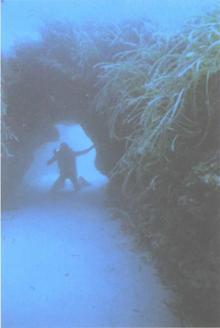 Underworld: The Mysterious Origins of Civilization
Underworld: The Mysterious Origins of Civilization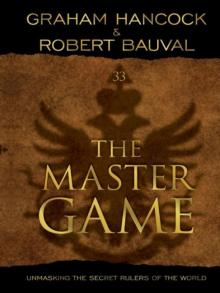 The Master Game: Unmasking the Secret Rulers of the World
The Master Game: Unmasking the Secret Rulers of the World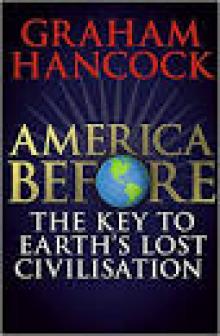 America Before
America Before Entangled
Entangled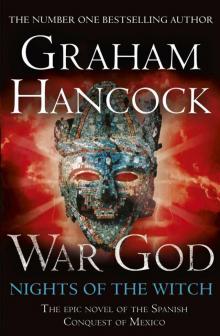 War God: Nights of the Witch
War God: Nights of the Witch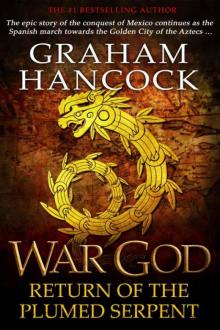 War God: Return of the Plumed Serpent
War God: Return of the Plumed Serpent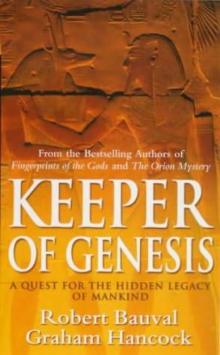 The Message of the Sphinx AKA Keeper of Genesis
The Message of the Sphinx AKA Keeper of Genesis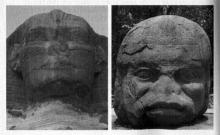 Fingerprints of the Gods
Fingerprints of the Gods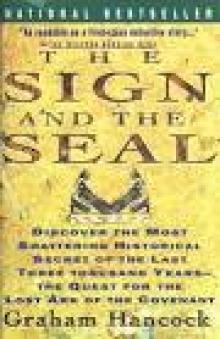 The Sign and the Seal
The Sign and the Seal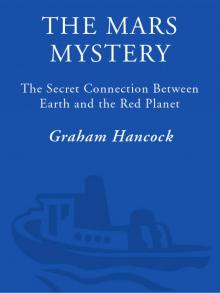 The Mars Mystery: The Secret Connection Between Earth and the Red Planet
The Mars Mystery: The Secret Connection Between Earth and the Red Planet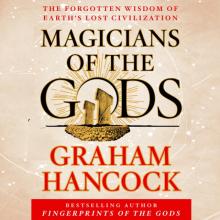 Magicians of the Gods: The Forgotten Wisdom of Earth's Lost Civilization
Magicians of the Gods: The Forgotten Wisdom of Earth's Lost Civilization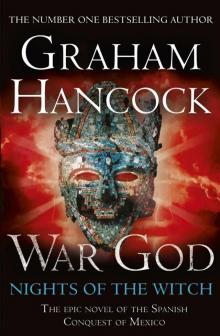 War God
War God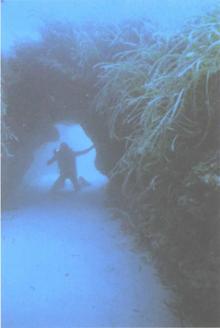 Underworld
Underworld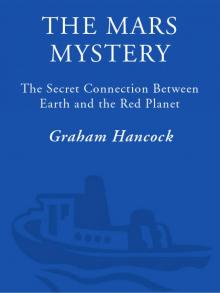 The Mars Mystery
The Mars Mystery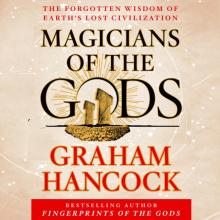 Magicians of the Gods
Magicians of the Gods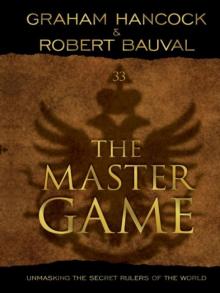 The Master Game
The Master Game